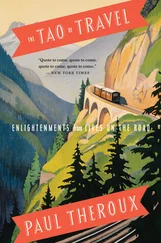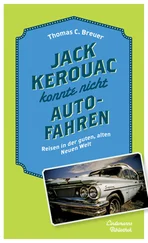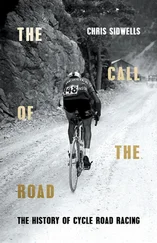Jack Kerouac - On The Road
Здесь есть возможность читать онлайн «Jack Kerouac - On The Road» весь текст электронной книги совершенно бесплатно (целиком полную версию без сокращений). В некоторых случаях можно слушать аудио, скачать через торрент в формате fb2 и присутствует краткое содержание. Жанр: Современная проза, на английском языке. Описание произведения, (предисловие) а так же отзывы посетителей доступны на портале библиотеки ЛибКат.
- Название:On The Road
- Автор:
- Жанр:
- Год:неизвестен
- ISBN:нет данных
- Рейтинг книги:5 / 5. Голосов: 1
-
Избранное:Добавить в избранное
- Отзывы:
-
Ваша оценка:
On The Road: краткое содержание, описание и аннотация
Предлагаем к чтению аннотацию, описание, краткое содержание или предисловие (зависит от того, что написал сам автор книги «On The Road»). Если вы не нашли необходимую информацию о книге — напишите в комментариях, мы постараемся отыскать её.
Kerouac, too, never understood what his book meant to the hordes of youngsters taking to the highways after the fashion of the characters peopling the narrative; but then, he was ill-fitted to grasp what his book had kindled in generations of young readers who felt stifled by the limitations of their parental homes. He never realized that he had prefigured their longings.
Born, in 1922, in Lowell MA and baptized Jean-Louis Lebris de Kerouac, he learned English only as a second language. His parents, French Canadian immigrants, provided for a parochial, Catholic conservative, working-class background dominated by the mother who, in keeping with her heritage, felt more comfortable at speaking to her children in her French-Canadian dialect. The father, a printer, lost his job in the Great Depression and never recovered his standing. “Ti-Jean” (as Jack was pet-named by his mother) was a brooding, introverted child, a voracious, if indiscriminate reader. In high school, he was a minor sensation on the football field, the performanance at half-back, rather than academic excellence, earning him a scholarship to Columbia University after a preparatory year at Horace Mann, a private high school in New York City. College football, however, was more competitive than high-school games, and after breaking a leg in practice, he could not establish himself as a starter on the team. He also was in academic difficulties and had to make up for failing grades with extracurricular work during summer vacation. Kerouac left Columbia during his sophomore year, came back for a brief spell the following year, and after various odd jobs at gas stations and an honorable discharge from the Navy for an “indifferent character,” he joined the merchant marine in 1942.
Jack, who claimed he had completed his first novel at age eleven, had written for his high-school paper, contributed articles on local college sports to the Columbia Spectator, and, “… inspired by a new enthusiasm for the novels of Thomas Wolfe” (Ann Charters, Kerouac), began to keep extensive journals. Onboard the S.S. George Weems, “bound for Liverpool with 500-pound bombs in her hold, flying the red dynamite flag” (Charters), he wrote The Sea Is My Brother, which remained unpublished. After the war restless years followed, as Jack grew involved in the emerging underground scene of New York. (In part he was to record those experiences in On the Road.) During the winters he lived in his mother’s apartment in Ozone Park, L.I. (the father had died in the spring of 1946), from where he set out on frequent drinking bouts, often lasting for several days, to Times Square bars or to parties in Greenwich Village; the summers he spent roaming the country between New York, San Francisco, and Mexico City. Intermittently he worked on what was to become The Town And the City; accepted by Harcourt, Brace Co. in 1949, the book appeared the following year and received lukewarm critical appraisal: “More often than not, the depth and breadth of his vision triumph decisively over his technical weaknesses,” the New York Times Book Review noted in November 1950.
During the spring of 1951 Kerouac completed, in a three-week burst of writing, a typescript entitled variously “Beat Generation” and “On the Road,” different names for “… a scroll of paper three inches thick made up of one single-spaced, unbroken 120 feet long paragraph,…” as a friend recalls. In spite of several revisions and persistent efforts, Kerouac could not find a publisher for what he, according to Ann Charters, “… knew immediately… was the best writing he had ever done.” Editors were more interested in stories dealing with the scandalous lifestyle of these young, “Beat” bohemians than in their artistic work, until, in late 1955, Malcolm Cowley, senior adviser at Viking, accepted the book on the proviso that he and Kerouac go over the script together. When On the Road finally came out in 1957, the original typescript had been cut by one-third and amended to approximate the text to literary, orthographic, and printing conventions. “… Cowley riddled the original style of the manuscript there, without my power to complain,…,” Kerouac indicted later in an interview for The Paris Review. (The tangled genesis of the text prior to publication-some seven typescript versions are known to exist-may well prove futile all attempts at establishing a definitive edition.)
In the wake of the clamor raised over the publication of Allen Ginsberg's “Howl” (the poem is dedicated to Kerouac, among others),On the Road made the bestseller lists and, except for a short lag in the early sixties, has continued to sell at a steady pace in America and Western Europe. The commercial success of On the Road prompted Viking to bring out more of Kerouac’s writings. By 1958 he had completed several manuscripts (Visions of Cody, Doctor Sax, and The Subterraneans, to name but a few), all autobiographical, loose in form, and written in the new prose style which he had developed in the meanwhile and called “Spontaneous Prose”: long, unpremeditated sentences full of associations, put to paper in the way they came to his mind; highly personal, often idiosyncratic accounts which were at times inherently contradictory; as he phrased it himself, in the vaguely programmatic “Essentials of Spontaneous Prose”:
No pause to think of proper word but the infantile pileup of scatological buildup words till satisfaction is gained, which will turn out to be a great appending rhythm to a thought and be in accordance with Great Law of timing.
The editors insisted on something conventional and chose The Dharma Bums because it was close to On the Road in scope, contents, and method of presentation. The book was inspired by Kerouac’s friendship with the Californian poet Gary Snyder, who became the model for Japhy Ryder, the hero of The Dharma Bums. Snyder had introduced Kerouac to Buddhist texts, the influence of which is traceable in On the Road and, more conspicuously, in The Dharma Bums. But Kerouac 'a infatuation with Eastern mysticism and religions was only transitory. At heart he always remained a devout Catholic, in his own personal way. He writes in “The Origins of the Beat Generation,” an article for Playboy:
I am not ashamed to wear the crucifix of my Lord. It is because I am Beat, that is, I believe in beatitude and that God so loved the world that he gave his own begotten son to it… So you people don’t believe in God. So you're all big smart know-it-all Marxists and Freudians, hey? Why don’t you come back in a million years and tell me all about it, angels?
Kerouac had always been an introverted, brooding, melancholic loner who preferred watching from the side over actively participating in his friends' hullabaloos; during the Sixties, his health deteriorating from continuous abuse of alcohol and benzedrine, he became utterly estranged from the world and retreated to his mother's home. He felt his work was misunderstood by the reading public, for whom he had become, due to his semi-fictitious heroes Dean Moriarty and Japhy Ryder, a cult figure and a pioneer of the newly emerging liberal movement. His political attitude was diametrically opposed to that of the majority of his readers as well as to that of his former close friend Allen Ginsberg. Kerouac spoke out in favor of the American engagement in Vietnam; in the interview for The Paris Review he explained:
I’m pro-American and the radical political involvements seem to tend elsewhere… The country gave my Canadian family a good break, more or less, and we see no reason to demean said country.
Shadows of fatalism and a profound pessimism permeate his later writing, for instance, The Vanity of Duluoz. Resignation, that all is “vanity,” rings through the last attempt at reshaping the legend he had begun with The Town And the City. Conspicuously, the two books cover roughly the same period of time, from the last years in Lowell to the father's death in New York City; while not exactly cheerful, the tone of The Town And the City, characterized by a longing to restore the happy days of childhood, had to give way to a deep sense of irrevocable loss. He wrote in the preface of Visions of Cody: “My work comprises one vast book like Proust's Remembrance of Things Past, except my remembrances are written on the run instead of afterwards in a sickbed.” The comparison, half-correct at best, sheds a distinct light on the author’s ambitions and misperceptions.
Jack Kerouac died on October 21, 1969, “of hemorrhaging esophageal varices, the classic drunkard’s death,” according to Gerald Nicosia, the author of Memory Babe, a near-definitive critical biography.












